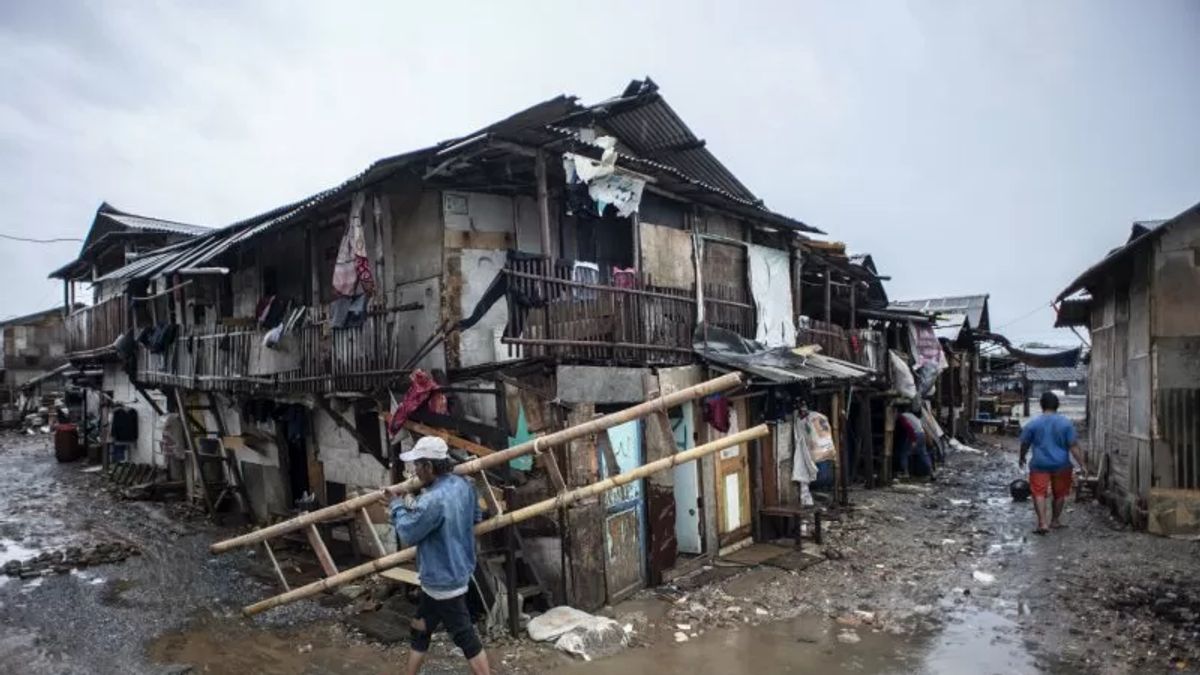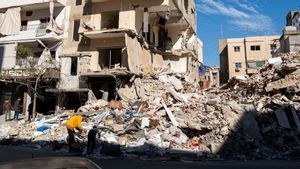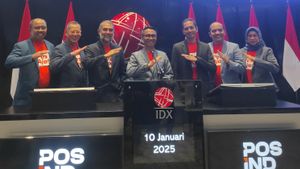JAKARTA - Acting Governor of DKI Jakarta Heru Budi Hartono revealed that the cause of economic inequality or the Gini ratio in the capital city has increased over the past six months.
According to Heru, the level of inequality could increase due to the COVID-19 pandemic that hit and resulted in restrictions on activities for two years.
"The difference between this ratio or gap could be in the process of two years of COVID. Now they are rising economically," said Heru at DKI Jakarta City Hall, Tuesday, July 18.
In addition, Heru also views that the large number of migrants from outside the area who enter Jakarta also has an impact on increasing economic inequality. Residents who do not have job certainty come to Jakarta to result in their economic condition in uncertainty.
"Next, maybe there are newcomers who have just been in the process of looking for work. Yes, mobility dynamics is high in DKI. Among other things, it's normal," he said.
However, Heru said that the DKI Jakarta Provincial Government continues to strive to improve the welfare of the community, especially in low-income groups by distributing social assistance and other social security.
"Once again, the DKI Regional Government is holding back the poverty line so that we can withstand what local governments usually say is social security," said Heru.
The Central Statistics Agency (BPS) of DKI Jakarta Province noted that the economic inequality or the Gini ratio of Jakarta residents increased. On the one hand, the number of poor people in Jakarta has decreased since six months ago.
The poor in Jakarta in March 2023 decreased by 17,100 people from six months ago, namely in September 2022. The current poverty rate is 4.4 percent and for the last six months it has fallen 0.17 percent.
However, the gap between population income in the lower class and the upper class was 0.431 percent. This figure increased 0.019 percent from September 2022, which was 0.412.
"Even though the number of poor people has decreased in this period, it still leaves an increasing inequality homework. This means that the gap between population income in the lower and upper class is even higher," said Acting Head of BPS DKI Jakarta Province Dwi Paramita Dewi in her statement, quoted on Tuesday, July 18.
SEE ALSO:
In this period, the distribution of the population in the spending group was 40 percent below 0.60 percentage points to 16.39 percent compared to the September 2022 period.
The problem of poverty, according to Dwi, is not just how much and the percentage of poor people are. Another dimension that needs to be considered is the level of depth and severity of poverty.
In the period September 2022-March 2023, the Poverty Depth Index (P1) and the Poverty Severity Index (P2) increased.
"The poverty depth index rose 0.013, which means that the average distance between spending for the poor is slightly away from the poverty line. And the poverty severity index has also increased by 0.017, which means that the inequality of expenditure among the poor is also getting higher," explained Dwi.
The English, Chinese, Japanese, Arabic, and French versions are automatically generated by the AI. So there may still be inaccuracies in translating, please always see Indonesian as our main language. (system supported by DigitalSiber.id)
















